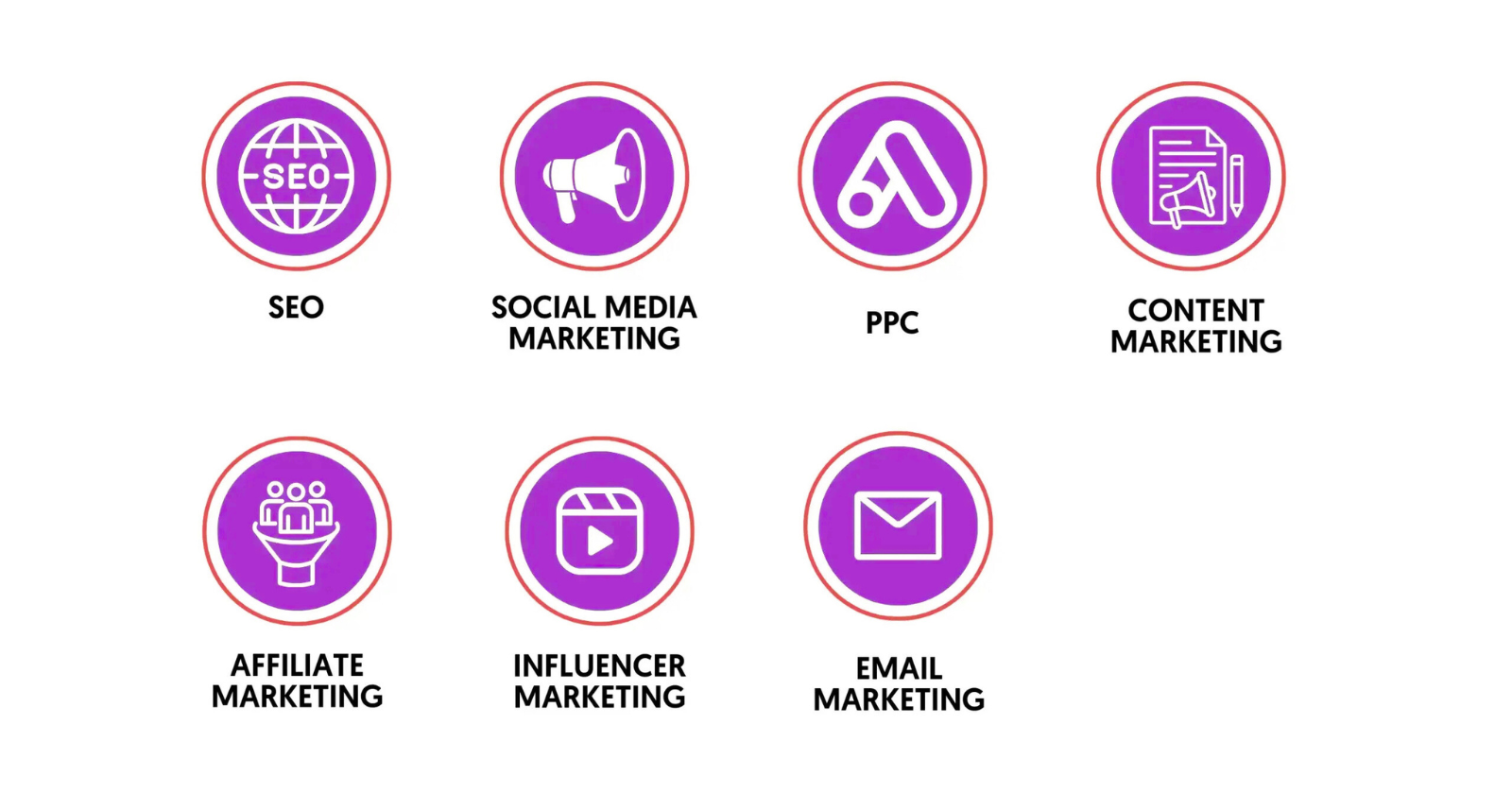In today’s fast-paced digital world, traditional marketing is losing its charm. People are no longer easily convinced by flashy advertisements. Instead, they trust real people — individuals they admire, follow, and connect with. That’s where Influencer Marketing comes in.
Influencer marketing has emerged as one of the most effective ways to reach a targeted audience, build brand trust, and drive real results. Whether you’re a startup or an established brand, this marketing strategy can unlock massive potential for your business.
In this blog, we’ll explore what influencer marketing is, how it works, why it’s so effective, and how you can build a successful influencer marketing campaign.
What is Influencer Marketing?
Influencer Marketing is a strategy that involves partnering with individuals who have a dedicated and engaged following on social media or other online platforms. These individuals — called influencers — promote your brand, products, or services to their audience through authentic content.
Rather than marketing directly to a large group of consumers, you collaborate with influencers who already have influence over your target audience.
Why Influencer Marketing Works
People trust people more than brands. That’s the key reason influencer marketing works so well.
Here’s why it’s powerful:
Authenticity and Trust
Influencers build strong relationships with their followers through consistent and genuine content. When they recommend something, it feels like a personal suggestion rather than an ad.
Niche Targeting
Influencers often serve specific niches — fitness, beauty, travel, tech, food, parenting, etc. Partnering with niche influencers helps you reach the exact type of audience you want.
High Engagement
Compared to brand posts, influencer content typically receives more likes, shares, and comments. This leads to better visibility and interaction.
Improved ROI
Influencer campaigns, when done right, often outperform traditional marketing in terms of return on investment — especially for awareness, lead generation, and conversions.
Types of Influencers
Influencers come in all shapes and sizes. Choosing the right type depends on your goals and budget:
| Type | Follower Count | Ideal For |
| Nano Influencers | 1K – 10K | Local campaigns, high engagement |
| Micro Influencers | 10K – 100K | Niche targeting, affordable rates |
| Macro Influencers | 100K – 1M | Wide reach, strong authority |
| Mega Influencers/Celebrities | 1M+ | Mass exposure, brand awareness |
Platforms for Influencer Marketing
Influencer marketing isn’t limited to one platform. Depending on your target audience, you can run campaigns on:
- Instagram – Most popular for lifestyle, fashion, beauty, and fitness.
- YouTube – Great for detailed reviews, tutorials, and storytelling.
- TikTok – Ideal for short-form, viral content with younger audiences.
- Twitter – Effective for tech, crypto, and thought leadership.
- Facebook – Still useful for longer-form posts and video content.
- LinkedIn – B2B influencer marketing for professionals and SaaS.
- Blogs – Influencers with personal blogs can offer backlinks and SEO value.
Benefits of Influencer Marketing
Let’s take a closer look at how influencer marketing can benefit your brand:
1. Builds Brand Awareness
Influencers introduce your brand to a new audience, increasing your visibility and reach quickly.
2. Boosts Credibility and Trust
Endorsements from trusted personalities make your brand more reliable in the eyes of potential customers.
3. Increases Engagement
Interactive content like giveaways, Q&As, and live videos can drive high engagement and attract new followers.
4. Drives Conversions and Sales
Influencer recommendations often lead to higher click-through rates and purchase decisions.
5. Enhances SEO
Blog mentions, backlinks, and increased branded search traffic contribute to SEO efforts.
How to Launch a Successful Influencer Marketing Campaign
Step 1: Define Your Goals
Start with a clear objective. Are you looking for more followers? Website traffic? Sales? Brand visibility?
Step 2: Know Your Audience
Understand who your ideal customers are, where they spend time online, and which influencers they follow.
Step 3: Choose the Right Influencers
Focus on:
- Relevance: Do they align with your brand?
- Engagement: Do their followers interact with their posts?
- Authenticity: Do they post genuine, non-promotional content?
- Reach: Do they have enough followers to meet your goals?
Step 4: Decide on the Campaign Type
Some popular influencer marketing campaigns include:
- Product reviews or unboxings
- Giveaways or contests
- Sponsored posts or stories
- Brand ambassadorship
- Takeovers or collaborations
Step 5: Set a Budget
Influencer pricing depends on their follower count, engagement rate, platform, and content format. Make sure to negotiate and get everything in writing.
Step 6: Monitor and Measure
Use metrics like reach, clicks, engagement rate, and conversions to evaluate success. Tools like Google Analytics, UTM links, and platform insights can help.
Best Practices for Influencer Marketing
To get the best results, keep these tips in mind:
- Build Relationships, Not Just Campaigns – Long-term partnerships lead to better authenticity.
- Give Creative Freedom – Allow influencers to present your brand in their own voice.
- Be Transparent – Use hashtags like #ad or #sponsored to comply with platform rules.
- Test and Learn – Run small campaigns, analyze results, and scale what works.
- Track ROI – Always measure the impact in terms of reach, engagement, traffic, or sales.
Challenges to Watch Out For
While influencer marketing is powerful, it’s not without challenges:
- Fake Followers – Some influencers inflate their numbers. Always check engagement rates.
- Mismatched Branding – An influencer might not align with your brand’s tone or values.
- Unclear Expectations – Poor communication can lead to disappointing outcomes.
- Over-promotion – If influencers promote too many brands, their credibility drops.
Influencer Marketing and AdSense Approval
If you’re running a blog or website, collaborating with influencers can help you:
- Get referral traffic from their social platforms.
- Build backlinks (if they mention your blog in theirs).
- Increase brand credibility and trust.
- Enhance user engagement metrics (like time-on-site), which are great for AdSense approval.
Make sure your blog content is original, human-written, and valuable to readers — just like this one. This improves your chances of getting approved by Google AdSense and earning through ads.
Future of Influencer Marketing
Influencer marketing is here to stay, but it’s evolving. In the future, we expect to see:
- More Micro and Nano Influencers – They offer better engagement and affordability.
- Focus on Long-Term Partnerships – One-off posts are giving way to ongoing collaborations.
- Use of AI and Data – Brands will use AI tools to discover the right influencers.
- Emphasis on Video Content – Short-form videos will dominate across platforms.
Final Thoughts
Influencer marketing is not just a trend — it’s a powerful tool for digital growth. By connecting your brand with the right voices, you can boost awareness, generate leads, and drive sales — all through trust and relatability.
Whether you’re a new entrepreneur or an established business, tapping into influencer marketing can help you build a loyal customer base and create lasting brand value in today’s social media-driven world.




